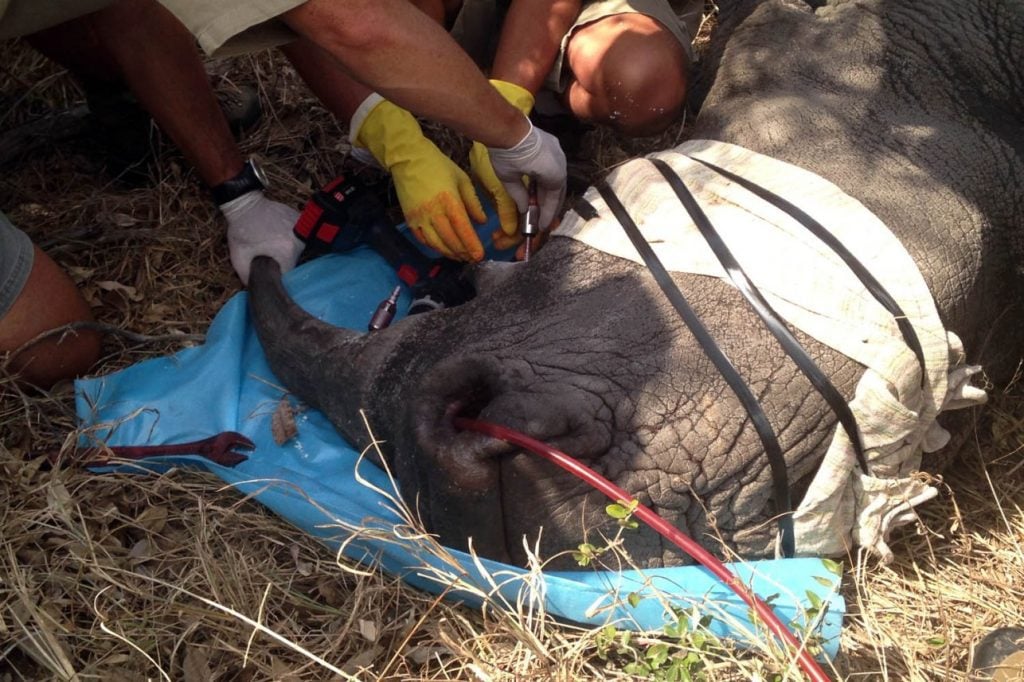Rhino horns are made up of keratin. It is the same protein that forms our nails and hair. Although there is no scientific proof of its medical value, the rhino horn remains to be one of the most coveted items in Asian Medicine. This leads to the poaching of rhinos. But what measures have conservationists in South Africa taken to prevent this from happening?
South African conservationists have injected red dyes and toxins into rhino horns to prevent poaching. The mixture renders the horn useless for commercial sale and is also toxic for human consumption.
How Did South African Conservationists Prevent the Poaching of Rhinos?
To devalue the rhino horn, it is infused with a compound composed of ectoparasiticides and indelible dye, contaminating the horn and rendering it unusable for ornamental or medicinal purposes. A complete DNA sample is extracted, and three identification microchips are implanted in the horns and the animal. We are constantly working to improve the chemical compounds injected into the horn to ensure that the compounds chosen infuse most of the horn material and provide the best chance of devaluing horns from the user’s perspective.
Lorina Hern, the co-founder of the Rhino Rescue Project, has spent the last four years devaluing rhino horns by infusing them with ectoparasiticides and pink dye. The dye is not visible outside, and the ectoparasiticides injected into the rhinos’ horns are not harmful to them. On the other hand, humans who handle or consume the horns may not be so fortunate.
At a minimum it would start with diarrhea, nausea, vomiting, and severe headaches, all the way up to nervous symptoms, which could be permanent. Some ectoparasiticides also precipitate the development of cancers later on in life.
Lorina Hern, Co-Founder, Rhino Rescue Project
Rhino Rescue works on behalf of wildlife parks and game reserves to protect rhinos from poachers. Wildlife tourism contributes billions of dollars to the South African economy yearly, and tourists expect to see rhinos on safari tours.
As a result, rhinos are expensive: a single animal can cost an owner more than $20,000. However, the demand for rhino horns in Asia, which are thought to have medicinal and aphrodisiac properties, has made a single rhino horn worth ten times as much on the black market, making the animals appealing targets for poachers. (Source: The World Org)
What Makes the Rhino Horn Special?
This keratin is very expensive, costing much more than gold. Rhino horns are highly valued because of this keratin, and many rhinos are hunted for it. In China, it is known as magical medicine. However, many significant steps are now being taken around the world to put a stop to this hunting. In such a situation, efforts are being made to ensure that the sale of rhino horns is legal and that the price is set so that hunters avoid hunting.
Cutting the unicorn’s horn, by the way, causes no problems. It’s similar to cutting someone’s hair or nails. This causes no pain to them; once the horn is cut, it regrows. Every gram of this horn has a high value and is precisely weighed. In Asia, the keratin found in the rhino horn is more expensive than gold. (Source: The World Org)
